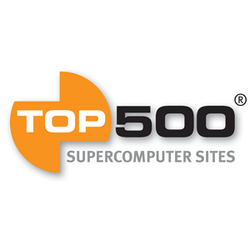
June 22, 2014
By: TOP500 Team
U.S. share of top supercomputers dips 15 percent, China increases its share by 20 percent
LEIPZIG, Germany; BERKELEY, Calif.; and KNOXVILLE, Tenn.—For the third consecutive time, Tianhe-2, a supercomputer developed by China’s National University of Defense Technology, has retained its position as the world’s No. 1 system with a performance of 33.86 petaflop/s (quadrillions of calculations per second) on the Linpack benchmark, according to the 43rd edition of the twice-yearly TOP500 list of the world’s most powerful supercomputers.
In fact, there was little change among the ranking of the world’s top 10 supercomputers in the latest edition of the closely watched list. The only new entry was at number 10—a 3.14 petaflop/s Cray XC30 installed at an undisclosed U.S. government site.
A detailed analysis of the latest TOP500 list will be presented Monday, June 23, at the International Supercomputing Conference in Leipzig, Germany. At that time, the full list will also be published at TOP500.org.
Although the United States remains the top country in terms of overall systems with 233, this is down from 265 on the November 2013 list. The number of Chinese systems on the list rose from 63 to 76, giving the Asian nation nearly as many supercomputers as the UK, with 30; France, with 27; and Germany, with 23; combined. Japan also increased its showing, up to 30 from 28 on the previous list.
Slowing trend in performance growth
Since its inception in June 1993, the TOP500 list has served as a consistent measure of the performance growth of supercomputers, since all systems are ranked according to performance running the same Linpack benchmark application. For the second consecutive list, the overall growth rate of all the systems is at a historical low.
This lag in the overall average performance of all 500 systems is noticeably influenced by the very large systems at the top of the list. Recent installations of very large systems – up to June 2013 – have counteracted the reduced growth rate at the bottom of the list, but with few new systems at the top of the past few lists, the overall growth rate is now slowing. This offers an indication that the market for the very largest systems might currently behave differently from the market of mid-sized and smaller supercomputers.
This is supported by the fact that the performance of the last system on the list (No. 500) has consistently lagged behind historical growth trends for the past five years, a trajectory that now increases by only 55 percent each year. Between 1994 and 2008, however, the annual growth rate for the No. 500 systems’ performance was 90 percent.
On the latest edition of the list, the No. 500 system recorded a performance of 133.7 teraflops (trillions of calculations per second, 117.8 teraflop/s six months ago. The last system on the newest list was listed at position 384 in the previous TOP500. This represents the lowest turnover rate in the list in two decades.
Other highlights from the 43rd list
- Total combined performance of all 500 systems has grown to 274 Pflop/s, compared to 250 Pflop/s six months ago and 223 Pflop/s one year ago. This increase in installed performance also exhibits a noticeable slowdown in growth compared to the previous long-term trend.
- There are 37 systems with performance greater than a petaflop/s on the list, up from 31 six months ago.
- The No. 1 system, Tianhe-2, and the No. 7 system, Stampede, use Intel Xeon Phi processors to speed up their computational rate. The No. 2 system, Titan, and the No. 6 system, Piz Daint, use NVIDIA GPUs to accelerate computation.
- A total of 62 systems on the list are using accelerator/co-processor technology, up from 53 from November 2013. Forty-four of these use NVIDIA chips, two use ATI Radeon, and there are now 17 systems with Intel MIC technology (Xeon Phi). The average number of accelerator cores for these 62 systems is 78,127 cores/system.
- Intel continues to provide the processors for the largest share (85.4 percent) of TOP500 systems. The share of IBM Power processors remains at 8 percent, while the AMD Opteron family is used in 6 percent of the systems, down from 9 percent on the previous list.
- Ninety-six percent of the systems use processors with six or more cores and 83 percent use eight or more cores.
- HP has the lead in systems and now has 182 systems (36 percent) compared to IBM with 176 systems (35 percent). HP had 196 systems (39 percent) six months ago, and IBM had 164 systems (33 percent) six months ago. In the system category, Cray remains third with 10 percent (50 systems).
About the TOP500 List
The first version of what became today’s TOP500 list started as an exercise for a small conference in Germany in June 1993. Out of curiosity, the authors decided to revisit the list in November 1993 to see how things had changed. About that time they realized they might be on to something and decided to continue compiling the list, which is now a much-anticipated, much-watched and much-debated twice-yearly event.
The TOP500 list is compiled by Erich Strohmaier and Horst Simon of Lawrence Berkeley National Laboratory; Jack Dongarra of the University of Tennessee, Knoxville; and Martin Meuer of Prometeus, Germany.
